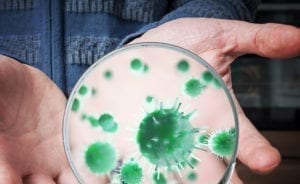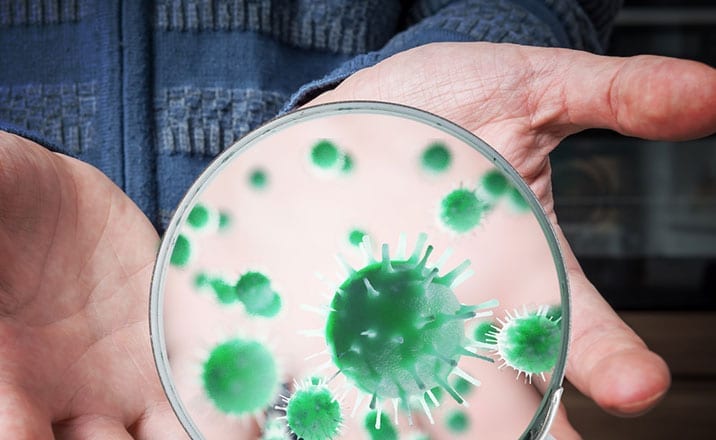臭氧和李斯特菌
编辑人员 Adminnn • 24 4 月, 2020
Listeria and Ozone Papers
We have assembled some research on the use of ozone specifically for L. monocytogenes. We have provided white paper titles, authors and abstracts below for your review, along with links to the full papers for your use.
If you have any further questions on the use of ozone for the inactivation of L. monocytogenes or any other pathogens please contact our application engineers today.
Efficacy of Ozone in Killing Listeria monocytogenes on Alfalfa Seeds and Sprouts and Effects on Sensory Quality of Sprouts
Source: Journal of Food Protection: Vol. 66, No. 1, pp. 44-51.
Authors: W. N. Wade (a, b); A. J. Scouten (a, b); K. H. McWatters (b); R. L. Wick (c); A. Demirci (d); W. F. Fett; and L. R. Beuchata (b)
- Center for Food Safety, University of Georgia, 1109 Experiment Street, Griffin, Georgia 30223-1797[PARA]
- Department of Food Science and Technology, University of Georgia, 1109 Experiment Street, Griffin, Georgia 30223-1797[PARA]
- Department of Microbiology, 639 Pleasant Street, Morrill Science Center IV-N203, University of Massachusetts, Amherst, Massachusetts 01003-9298[PARA]
- Department of Agricultural and Biological Engineering, Life Sciences Consortium, Pennsylvania State University, University Park, Pennsylvania 16802[PARA] U.S. Department of Agriculture, Agricultural Research Service, Eastern Regional Research Center, Food Intervention and Technology Research Unit, 600 East Mermaid Lane, Wyndmoor, Pennsylvania 19038, USA
Abstract
A study was done to determine the efficacy of aqueous ozone treatment in killing Listeria monocytogenes on inoculated alfalfa seeds and sprouts. Reductions in populations of naturally occurring aerobic microorganisms on sprouts and changes in the sensory quality of sprouts were also determined. The treatment (10 or 20 min) of seeds in water (4°C) containing an initial concentration of 21.8 ± 0.1 g/ml of ozone failed to cause a significant (P 0.05) reduction in populations of L. monocytogenes. The continuous sparging of seeds with ozonated water (initial ozone concentration of 21.3 ± 0.2 g/ml) for 20 min significantly reduced the population by 1.48 log10 CFU/g. The treatment (2 min) of inoculated alfalfa sprouts with water containing 5.0 ± 0.5, 9.0 ± 0.5, or 23.2 ± 1.6 g/ml of ozone resulted in significant (P 0.05) reductions of 0.78, 0.81, and 0.91 log10 CFU/g, respectively, compared to populations detected on sprouts treated with water. Treatments (2 min) with up to 23.3 ± 1.6 g/ml of ozone did not significantly (P > 0.05) reduce populations of aerobic naturally occurring microorganisms. The continuous sparging of sprouts with ozonated water for 5 to 20 min caused significant reductions in L. monocytogenes and natural microbiota compared to soaking in water (control) but did not enhance the lethality compared to the sprouts not treated with continuous sparging. The treatment of sprouts with Ozonated water (20.0 g/ml) for 5 or 10 min caused a significant deterioration in the sensory quality during subsequent storage at 4°C for 7 to 11 days. Scanning electron microscopy of uninoculated alfalfa seeds and sprouts showed physical damage, fungal and bacterial growth, and biofilm formation that provide evidence of factors contributing to the difficulty of killing microorganisms by treatment with ozone and other sanitizers.
Inactivation of Escherichia coli O1 57:H7, Listeria monocytogenes, and Lactobacillus leichmannii by combinations of ozone and pulsed electric field.
Authors: Unal R, Kim JG, Yousef AE.
Source: J Food Prot. 2001 Jun;64(6):777-82.
Publisher: Department of Food Science and Technology, The Ohio State University, Columbus 43210, USA.
Abstract
Pulsed electric field (PEF) and ozone technologies are nonthermal processing methods with potential applications in the food industry. This research was performed to explore the potential synergy between ozone and PEF treatments against selected foodborne bacteria. Cells of Lactobacillus leichmannii ATCC 4797, Escherichia coli O157:H7 ATCC 35150, and Listeria monocytogenes Scott A were suspended in 0.1% NaCl and treated with ozone, PEF and ozone plus PEE Cells were treated with 0.25 to 1.00 microg of ozone per ml of cell suspension, PEF at 10 to 30 kV/cm, and selected combinations of ozone and PEF. Synergy between ozone and PEF varied with the treatment level and the bacterium treated. L. leichmannii treated with PEF (20 kV/cm) after exposure to 0.75 and 1.00 microg/ml of ozone was inactivated by 7.1 and 7.2 log10 CFU/ml, respectively; however, ozone at 0.75 and 1.00 microg/ml and PEF at 20 kV/cm inactivated 2.2, 3.6, and 1.3 log10 CFU/ml, respectively. Similarly, ozone at 0.5 and 0.75 microg/ml inactivated 0.5 and 1.8 log10 CFU/ml of E. coli, PEF at 15 kV/cm inactivated 1.8 log10 CFU/ml, and ozone at 0.5 and 0.75 microg/ml followed by PEF (15 kV/cm) inactivated 2.9 and 3.6 log10 CFU/ml, respectively. Populations of L. monocytogenes decreased 0.1, 0.5, 3.0, 3.9, and 0.8 log10 CFU/ml when treated with 0.25, 0.5, 0.75, and 1.0 microg/ml of ozone and PEF (15 kV/cm), respectively; however, when the bacterium was treated with 15 kV/cm, after exposure to 0.25, 0.5, and 0.75 microg/ml of ozone, 1.7, 2.0, and 3.9 log10 CFU/ml were killed, respectively. In conclusion, exposure of L. leichmannii, E. coli and L. monocytogenes to ozone followed by the PEF treatment showed a synergistic bactericidal effect. This synergy was most apparent with mild doses of ozone against L. leichmannii.
Elimination of Listeria monocytogenes Biofilms by Ozone, Chlorine and Hydrogen Peroxide
Authors: Robbins Justin B.; Fisher Christopher W.; Moltz Andrew G.; Martin Scott E.
Source: Journal of Food Protection®, Volume 68, Number 3, March 2005 , pp. 494-498(5)
Publisher: International Association for Food Protection
Abstract
This study evaluated the efficacy of ozone, chlorine and hydrogen peroxide to destroy Listeria monocytogenes planktonic cells and biofilms of two test strains, Scott A and 10403S. L. monocytogenes was sensitive to ozone (O3), chlorine and hydrogen peroxide (H2O2). Planktonic cells of strain Scott A were completely destroyed by exposure to 0.25 ppm O3 (8.29–log reduction, CFU per milliliter). Ozone’s destruction of Scott A increased when the concentration was increased, with complete elimination at 4.00 ppm O3 (8.07–log reduction, CFU per chip). A 16-fold increase in sanitizer concentration was required to destroy biofilm cells of L. monocytogenes versus planktonic cells of strain Scott A. Strain 10403S required an ozone concentration of 1.00 ppm to eliminate planktonic cells (8.16–log reduction, CFU per milliliter). Attached cells of the same strain were eliminated at a concentration of 4.00 ppm O3 (7.47-log reduction, CFU per chip). At 100 ppm chlorine at 20°C, the number of planktonic cells L. monocytogenes 10403S was reduced by 5.77 log CFU/ml after 5 min of exposure and by 6.49 log CFU/ml after 10 min of exposure. Biofilm cells were reduced by 5.79 log CFU per chip following exposure to 100 ppm chlorine at 20°C for 5 min, with complete elimination (6.27 log CFU per chip) after exposure to 150 ppm at 20°C for 1 min. A 3% H2O2 solution reduced the initial concentration of L. monocytogenes Scott A planktonic cells by 6.0 log CFU/ml after 10 min of exposure at 20°C, and a 3.5% H2O2solution reduced the planktonic population by 5.4 and 8.7 log CFU/ml (complete elimination) after 5 and 10 min of exposure at 20°C, respectively. Exposure of cells grown as biofilms to 5% H2O2 resulted in a 4.14–log CFU per chip reduction after 10 min of exposure at 20°C and in a 5.58–log CFU per chip reduction (complete elimination) after 15 min of exposure. the potential synergy between ozone and PEF treatments against selected foodborne bacteria. Cells of Lactobacillus leichmannii ATCC 4797, Escherichia coli O157:H7 ATCC 35150, and Listeria monocytogenes Scott A were suspended in 0.1% NaCl and treated with ozone, PEF, and ozone plus PEE Cells were treated with 0.25 to 1.00 microg of ozone per ml of cell suspension, PEF at 10 to 30 kV/cm, and selected combinations of ozone and PEF. Synergy between ozone and PEF varied with the treatment level and the bacterium treated. L. leichmannii treated with PEF (20 kV/cm) after exposure to 0.75 and 1.00 microg/ml of ozone was inactivated by 7.1 and 7.2 log10 CFU/ml, respectively; however, ozone at 0.75 and 1.00 microg/ml and PEF at 20 kV/cm inactivated 2.2, 3.6, and 1.3 log10 CFU/ml, respectively. Similarly, ozone at 0.5 and 0.75 microg/ml inactivated 0.5 and 1.8 log10 CFU/ml of E. coli, PEF at 15 kV/cm inactivated 1.8 log10 CFU/ml, and ozone at 0.5 and 0.75 microg/ml followed by PEF (15 kV/cm) inactivated 2.9 and 3.6 log10 CFU/ml, respectively. Populations of L. monocytogenes decreased 0.1, 0.5, 3.0, 3.9, and 0.8 log10 CFU/ml when treated with 0.25, 0.5, 0.75, and 1.0 microg/ml of ozone and PEF (15 kV/cm), respectively; however, when the bacterium was treated with 15 kV/cm, after exposure to 0.25, 0.5, and 0.75 microg/ml of ozone, 1.7, 2.0, and 3.9 log10 CFU/ml were killed, respectively. In conclusion, exposure of L. leichmannii, E. coli, and L. monocytogenes to ozone followed by the PEF treatment showed a synergistic bactericidal effect. This synergy was most apparent with mild doses of ozone against L. leichmannii.
Effect of Ozone and Ultraviolet Irradiation Treatments on Listeria monocytogenes Populations in Chill Brines
Author: Govindaraj Dev Kumar
Date Created: November 19, 2008
Abstract
The efficacy of ozone and ultraviolet light, used in combination, to inactivate Listeria monocytogenes in fresh (9% NaCl, 91.86% transmittance at 254 nm) and spent chill brines (20.5% NaCl, 0.01% transmittance at 254 nm) was determined. Preliminary studies were conducted to optimize parameters for the ozonation of “fresh” and “spent” brines. These include diffuser design, comparison of kit to standard methods to measure residual ozone, studying the effect of ozone on uridine absorbance and determining presence of residual listericidal activity post ozonation. An ozone diffuser was designed using 3/16 inch PVC tubing for the ozonation of brines. The sparger was designed to facilitate better diffusion and its efficiency was tested. The modified sparger diffused 1.44 ppm of ozone after 30 minutes of ozonation and the solution had an excess of 1 ppm in 10 minutes of ozonating fresh brine solution (200ml). Population levels of L. monocytogenes were determined at various time intervals post-ozonation (0, 10, 20, 60 min) to determine the presence of residual listericidal activity. The population post ozonation (0 minutes) was 5.31 Log CFU/ml and was 5.08 Log CFU/ml after a 60 minute interval. Therefore, residual antimicrobial effect was weak. Accuracy of the Vacu-vial Ozone analysis kit was evaluated by comparing the performance of the kit to the standard indigo colorimetric method for measuring residual ozone. The kit was inaccurate in determining residual ozone levels of spent brines and 1% peptone water. Uridine was evaluated as a UV actinometric tool for brine solutions iii that were ozonated before UV treatment. The absorbance of uridine (A262) decreased after ozonation from 0.1329 to 0.0512 for standard 10 minutes UV exposure duration. Absorbance of uridine was influenced by ozone indicating that the presence of ozone may hamper UV fluence determination accuracy in ozone-treated solutions. Upon completion of diffuser design and ozone/UV analysis studies, the effect of ozone-UV combination on L. monocytogenes in fresh and spent brines was evaluated. Ozonation, when applied for 5 minutes, caused a 5.29 mean Log reduction while 5 minutes of UV exposure resulted in a 1.09 mean Log reduction of L. monocytogenes cells in fresh brines. Ten minutes of ozonation led to a 7.44 mean Log reduction and 10 minutes of UV radiation caused a 1.95 mean Log reduction of Listeria in fresh brine. Spent brines required 60 minutes of ozonation for a 4.97 mean Log reduction in L. monocytogenes counts, while 45 minutes resulted in a 4.04 mean Log reduction. Ten minutes of UV exposure of the spent brines resulted in 0.30 mean Log reduction in Listeria cells. A combination of 60 minutes ozonation and 10 minute UV exposure resulted in an excess of 5 log reduction in cell counts. Ozonation did not cause a sufficient increase in the transmittance of the spent brine to aid UV penetration but resulted in apparent color change as indicated by change in L*a*b* values. Ozonation for sufficient time had considerable listericidal activity in fresh brines and spent brines and when combined with UV treatment, is effective reducing L. monocytogenes to undetectable levels in fresh brines.
Effectiveness of Ozone in Inactivating Listeria monocytogenes from Milk Samples
Authors: Mariyaselvam Sheelamary, Muthusamy Muthukumar
Affiliations: Division of Environmental Engineering and Technology Department of Environmental Sciences Bharathiar University, Coimbatore, Tamil Nadu, INDIA
Accepted: June, 2011
Publisher: World Journal of Life Sciences and Medical Research 2011;1(3):40-4.
Abstract
Inactivation of Listeria monocytogenes using ozonation was studied in raw milk and various branded milk samples in and around Coimbatore City. Total of 20 milk samples were obtained from super markets and other places. The PALCAM agar was used in the study to enumerate L. monocytogenes from raw milk and various branded milk samples. Results indicate that all the samples are positive prior to the ozonation process. A controlled flow rate 0.5 m/l of oxygen was used to produce 0.2g/h of ozone. The milk samples were ozonated at 0, 5, 10, and 15 minutes. After treatment the samples are inoculated and L. monocytogenes were enumerated by using listeria PALCAM agar. After 15 minutes ozonation L. monocytogenes were completely eliminated from milk samples. Before and after ozonation the samples were analyzed for protein, carbohydrate, and calcium content. After treatment the nutritional values were slightly different in the milk samples.
Inactivation Kinetics of Foodborne Spoilage and Pathogenic Bacteria by Ozone
Authors: J.G. Kim and A.E. Yousef
Keywords: fluorescens, L. mesenteroides, and L. monocytoge
Abstract
Ozone was tested against Pseudomonas fluorescens, Escherichia coli O157:H7, Leuconostoc mesenteroides and Listeria monocytogenes. When kinetic data from a batch reactor were fitted to a dose-response model, a 2-phased linear relationship was observed. A continuous ozone reactor was developed to ensure a uniform exposure of bacterial cells to ozone and a constant concentration of ozone during the treatment. Survivors plots in the continuous system were linear initially, followed by a concave downward pattern. Exposure of bacteria to ozone at 2.5 ppm for 40 s caused 5 to 6 log decrease in count. Resistance of tested bacteria to ozone followed this descending order: E. coli O157:H7, P.
Influence of Catalase and Superoxide Dismutase on Ozone Inactivation of Listeria monocytogenes
Authors: Christopher W. Fisher, Dongha Lee, Beth-Anne Dodge, Kristen M. Hamman, Justin B. Robbins, and Scott E. Martin
Publication Details: Department of Food Science and Human Nutrition, University of Illinois, Urbana, Illinois. Received 20 September 1999/Accepted 6 January 2000
Abstract
The effects of ozone at 0.25, 0.40, and 1.00 ppm on Listeria monocytogenes were evaluated in distilled water and phosphate-buffered saline. Differences in sensitivity to ozone were found to exist among the six strains examined. Greater cell death was found following exposure at lower temperatures. Early stationary-phase cells were less sensitive to ozone than mid-exponential- and late stationary-phase cells. Ozonation at 1.00 ppm of cabbage inoculated with L. monocytogenes effectively inactivated all cells after 5 min. The abilities of in vivo catalase and superoxide dismutase to protect the cells from ozone were also examined. Three listerial test strains were inactivated rapidly upon exposure to ozone. Both catalase and superoxide dismutase were found to protect listerial cells from ozone attack, with superoxide dismutase being more important than catalase in this protection.
Listeria and Ozone Papers
We have assembled some research on the use of ozone specifically for L. monocytogenes. We have provided white paper titles, authors and abstracts below for your review, along with links to the full papers for your use.
If you have any further questions on the use of ozone for the inactivation of L. monocytogenes or any other pathogens please contact our application engineers today.
Efficacy of Ozone in Killing Listeria monocytogenes on Alfalfa Seeds and Sprouts and Effects on Sensory Quality of Sprouts
Source: Journal of Food Protection: Vol. 66, No. 1, pp. 44-51.
Authors: W. N. Wade (a, b); A. J. Scouten (a, b); K. H. McWatters (b); R. L. Wick (c); A. Demirci (d); W. F. Fett; and L. R. Beuchata (b)
- Center for Food Safety, University of Georgia, 1109 Experiment Street, Griffin, Georgia 30223-1797[PARA]
- Department of Food Science and Technology, University of Georgia, 1109 Experiment Street, Griffin, Georgia 30223-1797[PARA]
- Department of Microbiology, 639 Pleasant Street, Morrill Science Center IV-N203, University of Massachusetts, Amherst, Massachusetts 01003-9298[PARA]
- Department of Agricultural and Biological Engineering, Life Sciences Consortium, Pennsylvania State University, University Park, Pennsylvania 16802[PARA] U.S. Department of Agriculture, Agricultural Research Service, Eastern Regional Research Center, Food Intervention and Technology Research Unit, 600 East Mermaid Lane, Wyndmoor, Pennsylvania 19038, USA
Abstract
A study was done to determine the efficacy of aqueous ozone treatment in killing Listeria monocytogenes on inoculated alfalfa seeds and sprouts. Reductions in populations of naturally occurring aerobic microorganisms on sprouts and changes in the sensory quality of sprouts were also determined. The treatment (10 or 20 min) of seeds in water (4°C) containing an initial concentration of 21.8 ± 0.1 g/ml of ozone failed to cause a significant (P 0.05) reduction in populations of L. monocytogenes. The continuous sparging of seeds with ozonated water (initial ozone concentration of 21.3 ± 0.2 g/ml) for 20 min significantly reduced the population by 1.48 log10 CFU/g. The treatment (2 min) of inoculated alfalfa sprouts with water containing 5.0 ± 0.5, 9.0 ± 0.5, or 23.2 ± 1.6 g/ml of ozone resulted in significant (P 0.05) reductions of 0.78, 0.81, and 0.91 log10 CFU/g, respectively, compared to populations detected on sprouts treated with water. Treatments (2 min) with up to 23.3 ± 1.6 g/ml of ozone did not significantly (P > 0.05) reduce populations of aerobic naturally occurring microorganisms. The continuous sparging of sprouts with ozonated water for 5 to 20 min caused significant reductions in L. monocytogenes and natural microbiota compared to soaking in water (control) but did not enhance the lethality compared to the sprouts not treated with continuous sparging. The treatment of sprouts with Ozonated water (20.0 g/ml) for 5 or 10 min caused a significant deterioration in the sensory quality during subsequent storage at 4°C for 7 to 11 days. Scanning electron microscopy of uninoculated alfalfa seeds and sprouts showed physical damage, fungal and bacterial growth, and biofilm formation that provide evidence of factors contributing to the difficulty of killing microorganisms by treatment with ozone and other sanitizers.
Inactivation of Escherichia coli O1 57:H7, Listeria monocytogenes, and Lactobacillus leichmannii by combinations of ozone and pulsed electric field.
Authors: Unal R, Kim JG, Yousef AE.
Source: J Food Prot. 2001 Jun;64(6):777-82.
Publisher: Department of Food Science and Technology, The Ohio State University, Columbus 43210, USA.
Abstract
Pulsed electric field (PEF) and ozone technologies are nonthermal processing methods with potential applications in the food industry. This research was performed to explore the potential synergy between ozone and PEF treatments against selected foodborne bacteria. Cells of Lactobacillus leichmannii ATCC 4797, Escherichia coli O157:H7 ATCC 35150, and Listeria monocytogenes Scott A were suspended in 0.1% NaCl and treated with ozone, PEF and ozone plus PEE Cells were treated with 0.25 to 1.00 microg of ozone per ml of cell suspension, PEF at 10 to 30 kV/cm, and selected combinations of ozone and PEF. Synergy between ozone and PEF varied with the treatment level and the bacterium treated. L. leichmannii treated with PEF (20 kV/cm) after exposure to 0.75 and 1.00 microg/ml of ozone was inactivated by 7.1 and 7.2 log10 CFU/ml, respectively; however, ozone at 0.75 and 1.00 microg/ml and PEF at 20 kV/cm inactivated 2.2, 3.6, and 1.3 log10 CFU/ml, respectively. Similarly, ozone at 0.5 and 0.75 microg/ml inactivated 0.5 and 1.8 log10 CFU/ml of E. coli, PEF at 15 kV/cm inactivated 1.8 log10 CFU/ml, and ozone at 0.5 and 0.75 microg/ml followed by PEF (15 kV/cm) inactivated 2.9 and 3.6 log10 CFU/ml, respectively. Populations of L. monocytogenes decreased 0.1, 0.5, 3.0, 3.9, and 0.8 log10 CFU/ml when treated with 0.25, 0.5, 0.75, and 1.0 microg/ml of ozone and PEF (15 kV/cm), respectively; however, when the bacterium was treated with 15 kV/cm, after exposure to 0.25, 0.5, and 0.75 microg/ml of ozone, 1.7, 2.0, and 3.9 log10 CFU/ml were killed, respectively. In conclusion, exposure of L. leichmannii, E. coli and L. monocytogenes to ozone followed by the PEF treatment showed a synergistic bactericidal effect. This synergy was most apparent with mild doses of ozone against L. leichmannii.
Elimination of Listeria monocytogenes Biofilms by Ozone, Chlorine and Hydrogen Peroxide
Authors: Robbins Justin B.; Fisher Christopher W.; Moltz Andrew G.; Martin Scott E.
Source: Journal of Food Protection®, Volume 68, Number 3, March 2005 , pp. 494-498(5)
Publisher: International Association for Food Protection
Abstract
This study evaluated the efficacy of ozone, chlorine and hydrogen peroxide to destroy Listeria monocytogenes planktonic cells and biofilms of two test strains, Scott A and 10403S. L. monocytogenes was sensitive to ozone (O3), chlorine and hydrogen peroxide (H2O2). Planktonic cells of strain Scott A were completely destroyed by exposure to 0.25 ppm O3 (8.29–log reduction, CFU per milliliter). Ozone’s destruction of Scott A increased when the concentration was increased, with complete elimination at 4.00 ppm O3 (8.07–log reduction, CFU per chip). A 16-fold increase in sanitizer concentration was required to destroy biofilm cells of L. monocytogenes versus planktonic cells of strain Scott A. Strain 10403S required an ozone concentration of 1.00 ppm to eliminate planktonic cells (8.16–log reduction, CFU per milliliter). Attached cells of the same strain were eliminated at a concentration of 4.00 ppm O3 (7.47-log reduction, CFU per chip). At 100 ppm chlorine at 20°C, the number of planktonic cells L. monocytogenes 10403S was reduced by 5.77 log CFU/ml after 5 min of exposure and by 6.49 log CFU/ml after 10 min of exposure. Biofilm cells were reduced by 5.79 log CFU per chip following exposure to 100 ppm chlorine at 20°C for 5 min, with complete elimination (6.27 log CFU per chip) after exposure to 150 ppm at 20°C for 1 min. A 3% H2O2 solution reduced the initial concentration of L. monocytogenes Scott A planktonic cells by 6.0 log CFU/ml after 10 min of exposure at 20°C, and a 3.5% H2O2solution reduced the planktonic population by 5.4 and 8.7 log CFU/ml (complete elimination) after 5 and 10 min of exposure at 20°C, respectively. Exposure of cells grown as biofilms to 5% H2O2 resulted in a 4.14–log CFU per chip reduction after 10 min of exposure at 20°C and in a 5.58–log CFU per chip reduction (complete elimination) after 15 min of exposure. the potential synergy between ozone and PEF treatments against selected foodborne bacteria. Cells of Lactobacillus leichmannii ATCC 4797, Escherichia coli O157:H7 ATCC 35150, and Listeria monocytogenes Scott A were suspended in 0.1% NaCl and treated with ozone, PEF, and ozone plus PEE Cells were treated with 0.25 to 1.00 microg of ozone per ml of cell suspension, PEF at 10 to 30 kV/cm, and selected combinations of ozone and PEF. Synergy between ozone and PEF varied with the treatment level and the bacterium treated. L. leichmannii treated with PEF (20 kV/cm) after exposure to 0.75 and 1.00 microg/ml of ozone was inactivated by 7.1 and 7.2 log10 CFU/ml, respectively; however, ozone at 0.75 and 1.00 microg/ml and PEF at 20 kV/cm inactivated 2.2, 3.6, and 1.3 log10 CFU/ml, respectively. Similarly, ozone at 0.5 and 0.75 microg/ml inactivated 0.5 and 1.8 log10 CFU/ml of E. coli, PEF at 15 kV/cm inactivated 1.8 log10 CFU/ml, and ozone at 0.5 and 0.75 microg/ml followed by PEF (15 kV/cm) inactivated 2.9 and 3.6 log10 CFU/ml, respectively. Populations of L. monocytogenes decreased 0.1, 0.5, 3.0, 3.9, and 0.8 log10 CFU/ml when treated with 0.25, 0.5, 0.75, and 1.0 microg/ml of ozone and PEF (15 kV/cm), respectively; however, when the bacterium was treated with 15 kV/cm, after exposure to 0.25, 0.5, and 0.75 microg/ml of ozone, 1.7, 2.0, and 3.9 log10 CFU/ml were killed, respectively. In conclusion, exposure of L. leichmannii, E. coli, and L. monocytogenes to ozone followed by the PEF treatment showed a synergistic bactericidal effect. This synergy was most apparent with mild doses of ozone against L. leichmannii.
Effect of Ozone and Ultraviolet Irradiation Treatments on Listeria monocytogenes Populations in Chill Brines
Author: Govindaraj Dev Kumar
Date Created: November 19, 2008
Abstract
The efficacy of ozone and ultraviolet light, used in combination, to inactivate Listeria monocytogenes in fresh (9% NaCl, 91.86% transmittance at 254 nm) and spent chill brines (20.5% NaCl, 0.01% transmittance at 254 nm) was determined. Preliminary studies were conducted to optimize parameters for the ozonation of “fresh” and “spent” brines. These include diffuser design, comparison of kit to standard methods to measure residual ozone, studying the effect of ozone on uridine absorbance and determining presence of residual listericidal activity post ozonation. An ozone diffuser was designed using 3/16 inch PVC tubing for the ozonation of brines. The sparger was designed to facilitate better diffusion and its efficiency was tested. The modified sparger diffused 1.44 ppm of ozone after 30 minutes of ozonation and the solution had an excess of 1 ppm in 10 minutes of ozonating fresh brine solution (200ml). Population levels of L. monocytogenes were determined at various time intervals post-ozonation (0, 10, 20, 60 min) to determine the presence of residual listericidal activity. The population post ozonation (0 minutes) was 5.31 Log CFU/ml and was 5.08 Log CFU/ml after a 60 minute interval. Therefore, residual antimicrobial effect was weak. Accuracy of the Vacu-vial Ozone analysis kit was evaluated by comparing the performance of the kit to the standard indigo colorimetric method for measuring residual ozone. The kit was inaccurate in determining residual ozone levels of spent brines and 1% peptone water. Uridine was evaluated as a UV actinometric tool for brine solutions iii that were ozonated before UV treatment. The absorbance of uridine (A262) decreased after ozonation from 0.1329 to 0.0512 for standard 10 minutes UV exposure duration. Absorbance of uridine was influenced by ozone indicating that the presence of ozone may hamper UV fluence determination accuracy in ozone-treated solutions. Upon completion of diffuser design and ozone/UV analysis studies, the effect of ozone-UV combination on L. monocytogenes in fresh and spent brines was evaluated. Ozonation, when applied for 5 minutes, caused a 5.29 mean Log reduction while 5 minutes of UV exposure resulted in a 1.09 mean Log reduction of L. monocytogenes cells in fresh brines. Ten minutes of ozonation led to a 7.44 mean Log reduction and 10 minutes of UV radiation caused a 1.95 mean Log reduction of Listeria in fresh brine. Spent brines required 60 minutes of ozonation for a 4.97 mean Log reduction in L. monocytogenes counts, while 45 minutes resulted in a 4.04 mean Log reduction. Ten minutes of UV exposure of the spent brines resulted in 0.30 mean Log reduction in Listeria cells. A combination of 60 minutes ozonation and 10 minute UV exposure resulted in an excess of 5 log reduction in cell counts. Ozonation did not cause a sufficient increase in the transmittance of the spent brine to aid UV penetration but resulted in apparent color change as indicated by change in L*a*b* values. Ozonation for sufficient time had considerable listericidal activity in fresh brines and spent brines and when combined with UV treatment, is effective reducing L. monocytogenes to undetectable levels in fresh brines.
Effectiveness of Ozone in Inactivating Listeria monocytogenes from Milk Samples
Authors: Mariyaselvam Sheelamary, Muthusamy Muthukumar
Affiliations: Division of Environmental Engineering and Technology Department of Environmental Sciences Bharathiar University, Coimbatore, Tamil Nadu, INDIA
Accepted: June, 2011
Publisher: World Journal of Life Sciences and Medical Research 2011;1(3):40-4.
Abstract
Inactivation of Listeria monocytogenes using ozonation was studied in raw milk and various branded milk samples in and around Coimbatore City. Total of 20 milk samples were obtained from super markets and other places. The PALCAM agar was used in the study to enumerate L. monocytogenes from raw milk and various branded milk samples. Results indicate that all the samples are positive prior to the ozonation process. A controlled flow rate 0.5 m/l of oxygen was used to produce 0.2g/h of ozone. The milk samples were ozonated at 0, 5, 10, and 15 minutes. After treatment the samples are inoculated and L. monocytogenes were enumerated by using listeria PALCAM agar. After 15 minutes ozonation L. monocytogenes were completely eliminated from milk samples. Before and after ozonation the samples were analyzed for protein, carbohydrate, and calcium content. After treatment the nutritional values were slightly different in the milk samples.
Inactivation Kinetics of Foodborne Spoilage and Pathogenic Bacteria by Ozone
Authors: J.G. Kim and A.E. Yousef
Keywords: fluorescens, L. mesenteroides, and L. monocytoge
Abstract
Ozone was tested against Pseudomonas fluorescens, Escherichia coli O157:H7, Leuconostoc mesenteroides and Listeria monocytogenes. When kinetic data from a batch reactor were fitted to a dose-response model, a 2-phased linear relationship was observed. A continuous ozone reactor was developed to ensure a uniform exposure of bacterial cells to ozone and a constant concentration of ozone during the treatment. Survivors plots in the continuous system were linear initially, followed by a concave downward pattern. Exposure of bacteria to ozone at 2.5 ppm for 40 s caused 5 to 6 log decrease in count. Resistance of tested bacteria to ozone followed this descending order: E. coli O157:H7, P.
Influence of Catalase and Superoxide Dismutase on Ozone Inactivation of Listeria monocytogenes
Authors: Christopher W. Fisher, Dongha Lee, Beth-Anne Dodge, Kristen M. Hamman, Justin B. Robbins, and Scott E. Martin
Publication Details: Department of Food Science and Human Nutrition, University of Illinois, Urbana, Illinois. Received 20 September 1999/Accepted 6 January 2000
Abstract
The effects of ozone at 0.25, 0.40, and 1.00 ppm on Listeria monocytogenes were evaluated in distilled water and phosphate-buffered saline. Differences in sensitivity to ozone were found to exist among the six strains examined. Greater cell death was found following exposure at lower temperatures. Early stationary-phase cells were less sensitive to ozone than mid-exponential- and late stationary-phase cells. Ozonation at 1.00 ppm of cabbage inoculated with L. monocytogenes effectively inactivated all cells after 5 min. The abilities of in vivo catalase and superoxide dismutase to protect the cells from ozone were also examined. Three listerial test strains were inactivated rapidly upon exposure to ozone. Both catalase and superoxide dismutase were found to protect listerial cells from ozone attack, with superoxide dismutase being more important than catalase in this protection.




















